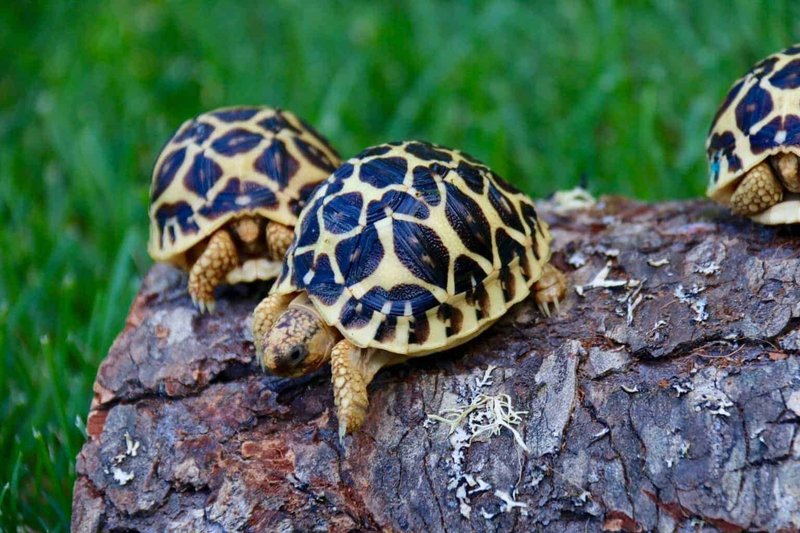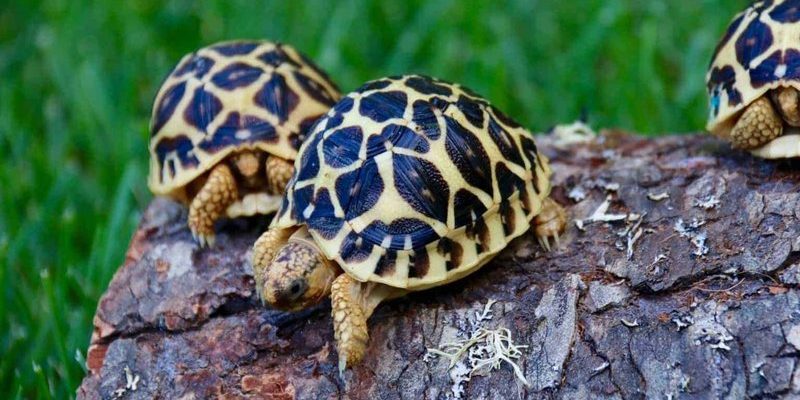
The diet of the Indian star tortoise is not just about grazing. They have a varied menu that reflects their environment and the challenges they face. From plants to fruits, their food choices are as colorful as their shells. Their hunting strategy isn’t about speed or aggression like some predators; instead, it’s all about patience and a keen sense of their surroundings. Let’s dive deeper into what makes their eating habits and methods so interesting.
What Do Indian Star Tortoises Eat?
The Indian star tortoise is primarily herbivorous, meaning it mainly eats plants. However, their diet is quite diverse. They enjoy a mix of grasses, weeds, and leaves, but can also munch on fruits and flowers when available. This variety in their diet is crucial for their health, providing them with the vitamins and nutrients they need.
You might be surprised to learn that the Indian star tortoise is a selective feeder. They tend to favor certain plants over others, which can vary based on their geographical location. For instance, they might prefer cacti, dandelions, or even clover depending on what’s available in the wild. Their ability to recognize different plants helps them make smart choices that contribute to their survival.
In addition to what they eat, the way they consume food is also interesting. They use their strong, beak-like jaws to tear at tougher plants, making it easier to access the nutrients inside. Sometimes, they might take their time to chew on their food, which helps with digestion. This slower approach to eating fits their laid-back lifestyle, allowing them to enjoy their meals thoughtfully.
Seasonal Changes in Diet
Just like many animals, Indian star tortoises experience changes in their diet based on the seasons. During the rainy season, when food is abundant, you’ll see them indulging in fresh greens and succulent fruits. This is the time for vibrant feasting, where the tortoises can bulk up on nutrients after the dry spell.
As the dry season approaches, food becomes scarce, and their diet shifts. They may depend more on dried grasses and tougher plants, which are often less nutritious. It’s quite remarkable how these tortoises adapt their eating habits to survive the changing environment. You’ll often find them exploring their territory for hidden caches of food, demonstrating their ability to forage carefully.
This seasonal adaptability is crucial for their survival, showcasing their resilience. Think of it like a winter holiday feast followed by a retreat to simpler, pantry-style meals. It’s all about making the best of what’s available at any given time, a lesson we can appreciate in our own lives too.
Hunting Strategies: Foraging Like a Pro
When we think of “hunting,” we might picture a lion chasing down a gazelle. For the Indian star tortoise, hunting is more about foraging and being strategic about food sources rather than chasing after prey. Patience is key here. They typically roam their habitat at a leisurely pace, keeping an eye out for tasty morsels.
These tortoises are not known for covering vast distances in search of food. Instead, they focus on a defined area where they know the best food is located. This means they often return to the same spots where they’ve previously found food. It’s almost like knowing your favorite local café—why wander too far when you know the best dishes are just around the corner?
Also, their excellent sense of smell plays a significant role in their hunting strategy. They can pick up on scents in the air and locate food sources effectively. Imagine walking through a farmer’s market and getting a whiff of fresh fruits; that’s similar to what these tortoises experience while foraging in the wild.
Cooperation in Finding Food
Interestingly, Indian star tortoises can also exhibit some level of social behavior when it comes to finding food. While they are generally solitary animals, there are times when they might be seen foraging in the same area, benefitting from each other’s discoveries. It’s a bit like when friends go out for a meal. Sometimes, sharing a meal leads to discovering new favorite dishes.
By sticking together, these tortoises can help each other locate sources of food more efficiently. If one tortoise finds a particularly tasty patch of grass, others nearby might sniff it out and join in the feast. While not exactly a coordinated team effort, this behavior highlights how animals can learn from and adapt to their environments together.
This social foraging is not just about food. It can also help in avoiding predators. When more tortoises are present, their chances of spotting danger rise, making it a safer experience to forage in groups, even if only temporarily.
Hydration and Diet: The Importance of Water
Along with their diet, hydration is also crucial for the Indian star tortoise. These tortoises primarily get their water intake from the plants they consume, especially during the lush rainy season. It’s important to remember that they can also drink water directly when it’s available.
During dry spells, finding enough water becomes more challenging. They might dig small holes to access underground moisture or seek out dark, shady areas where dew might collect. This behavior is another clever strategy that helps them survive in harsh conditions. Just like we might search for a cool drink on a hot day, these tortoises know their hydration needs.
It’s fascinating how the Indian star tortoise balances its dietary needs with hydration, showing that both elements are essential for their health. Staying hydrated helps them maintain their energy levels and supports critical bodily functions.
The Indian star tortoise showcases a remarkable lifestyle that revolves around their diet and unique hunting strategies. From their selective feeding habits to their clever foraging techniques, these tortoises remind us of the beauty of nature’s adaptations. They navigate their environments with a combination of patience, social instincts, and a keen sense of awareness.
As we’ve explored, their diet changes with the seasons, and they employ smart strategies for finding food, reflecting their resilience. These tortoises teach us the importance of adapting to our circumstances and making the most of what we have—whether that’s food, water, or even friendships.
So, next time you come across one of these starry-shelled creatures, remember the intricate world they inhabit. Their journey through life is a wonderful reminder of nature’s ingenuity and the delicate balance within ecosystems.

